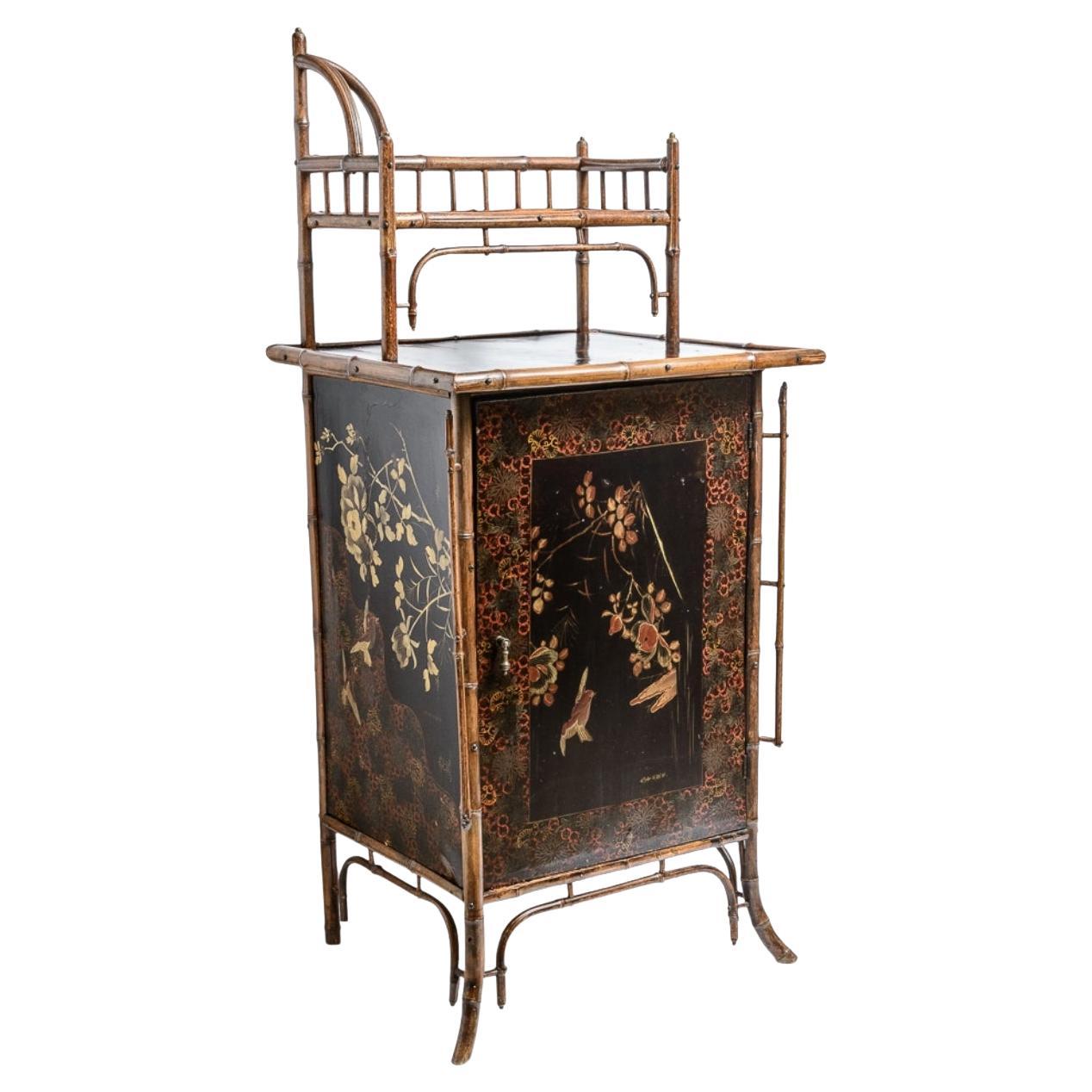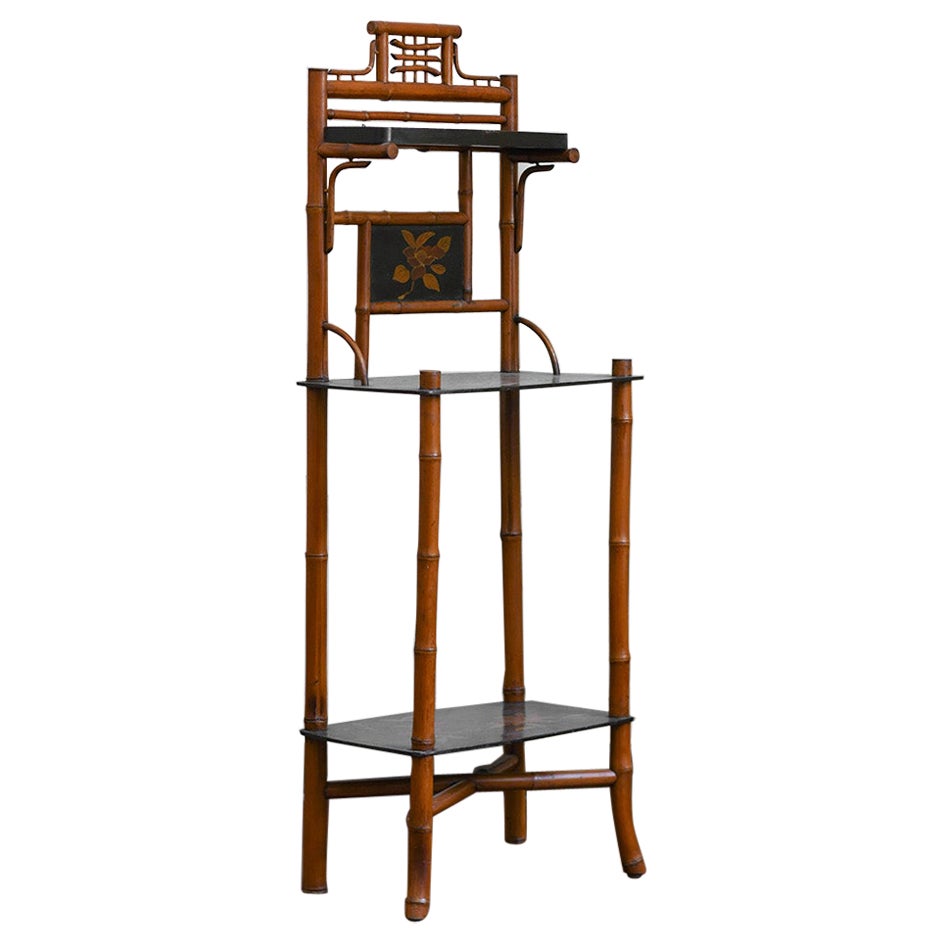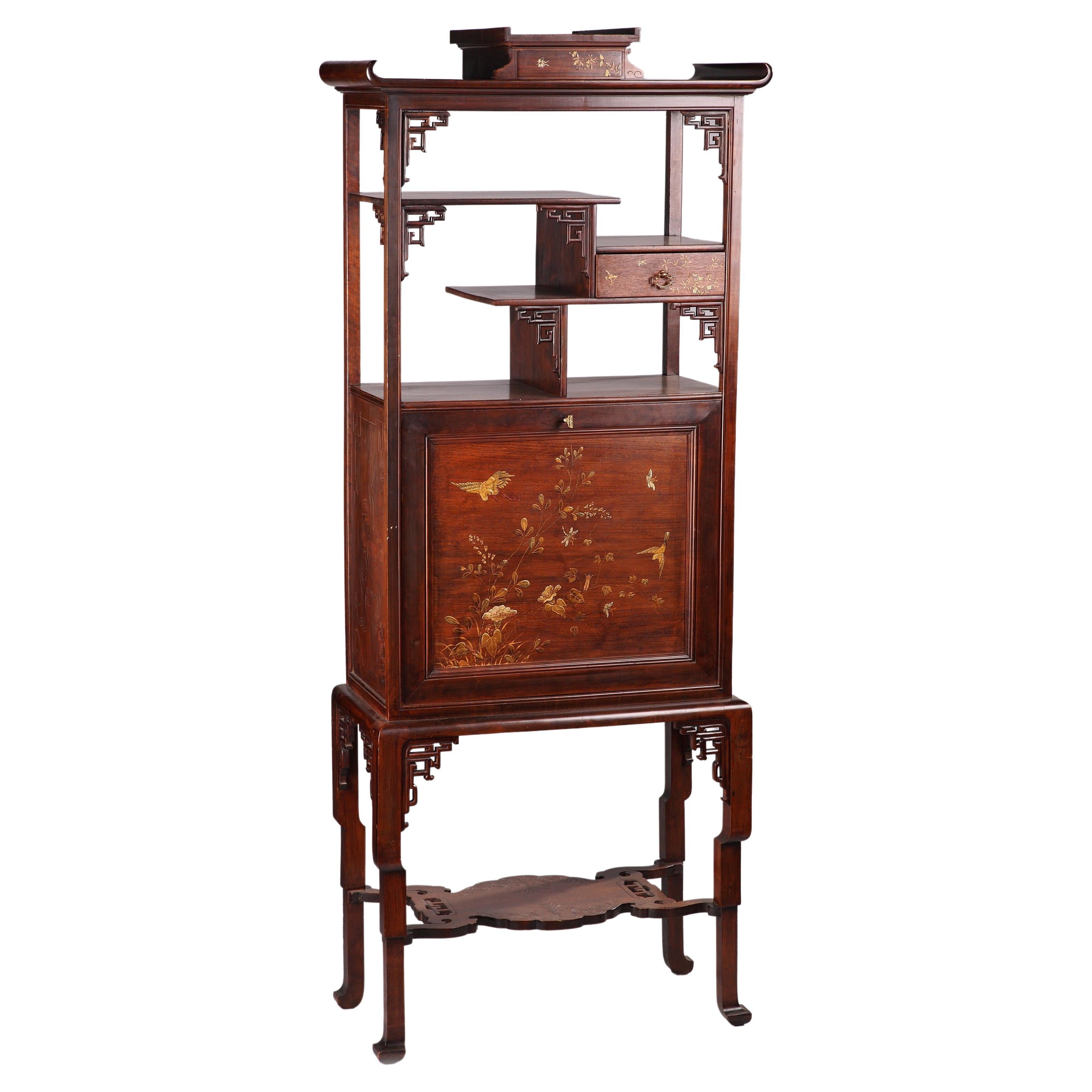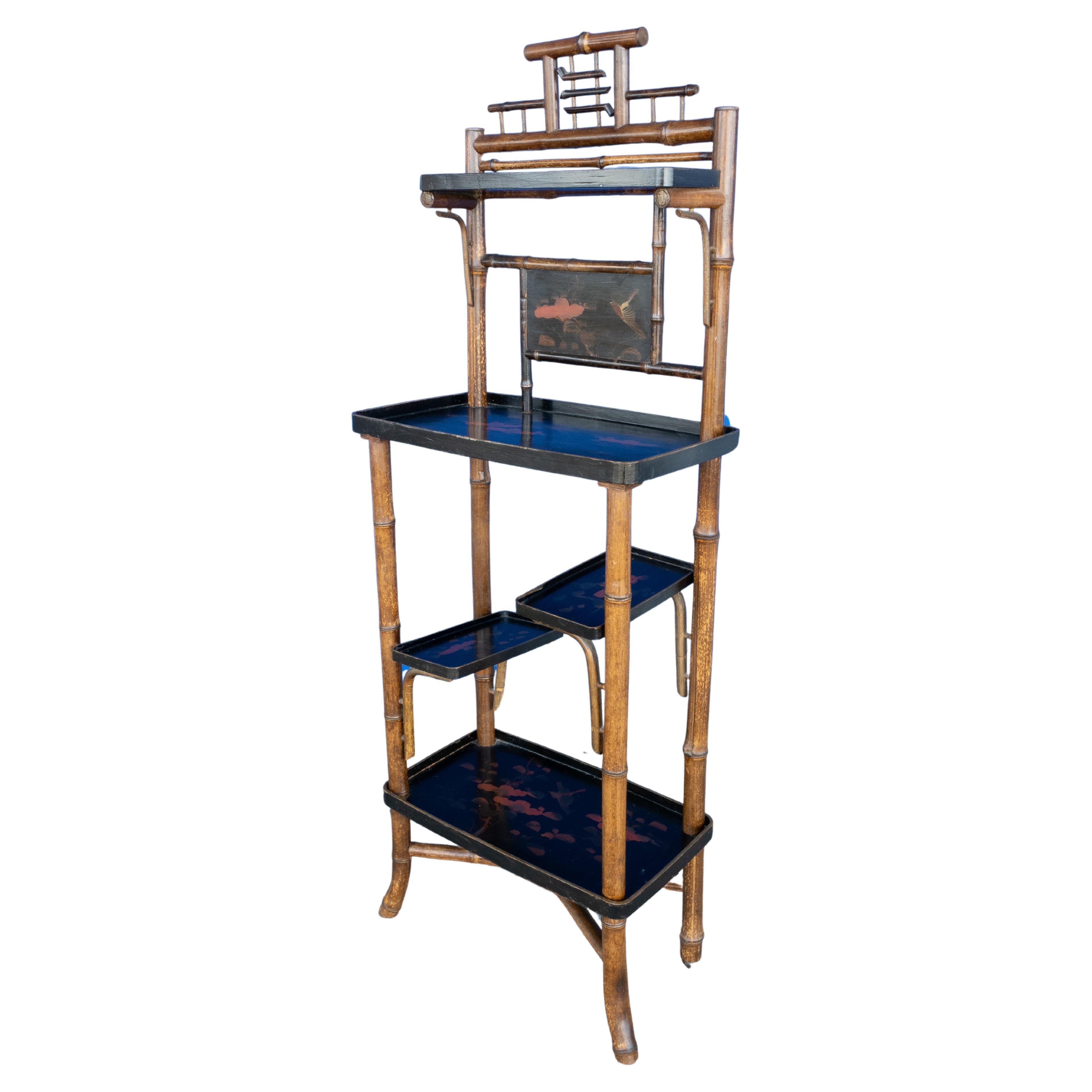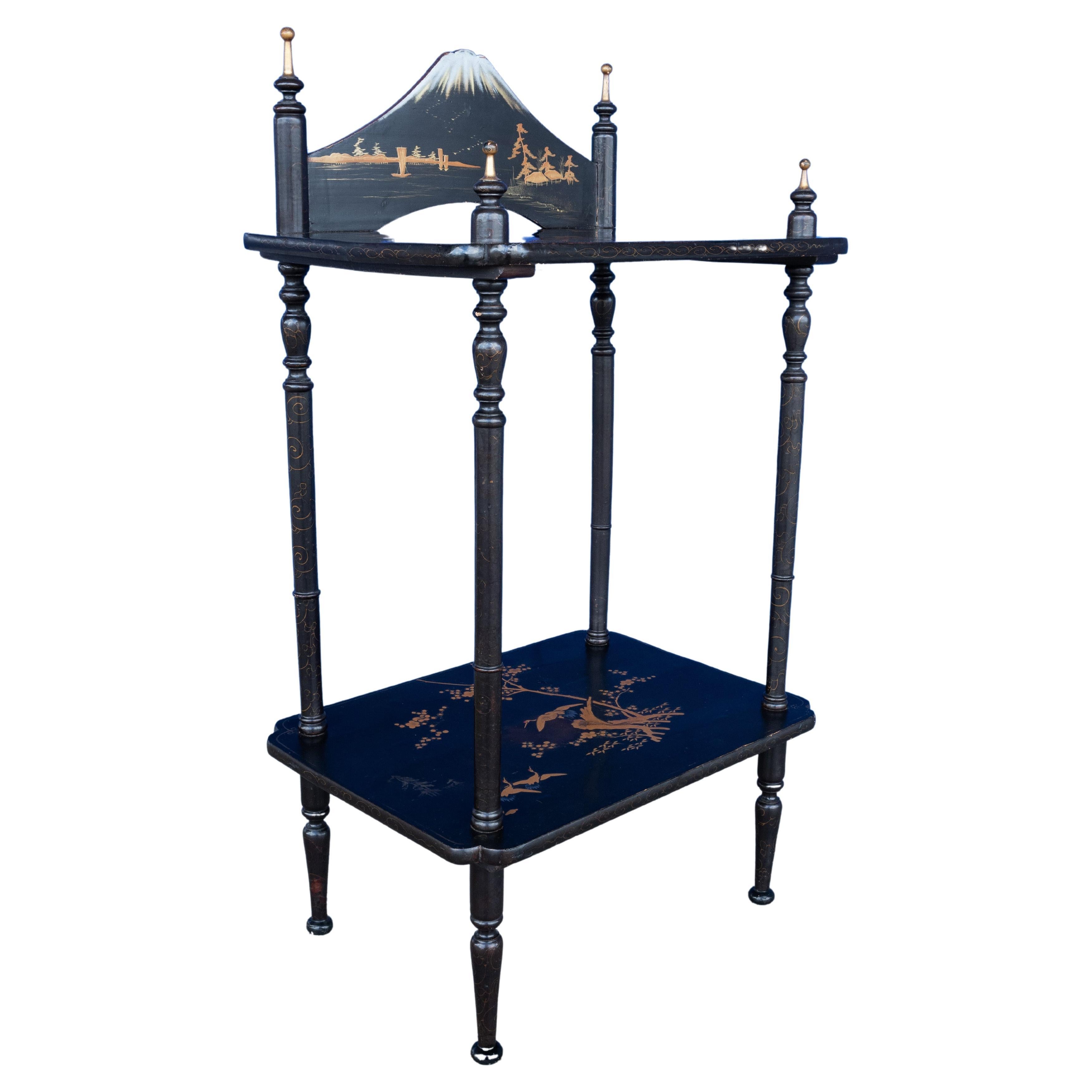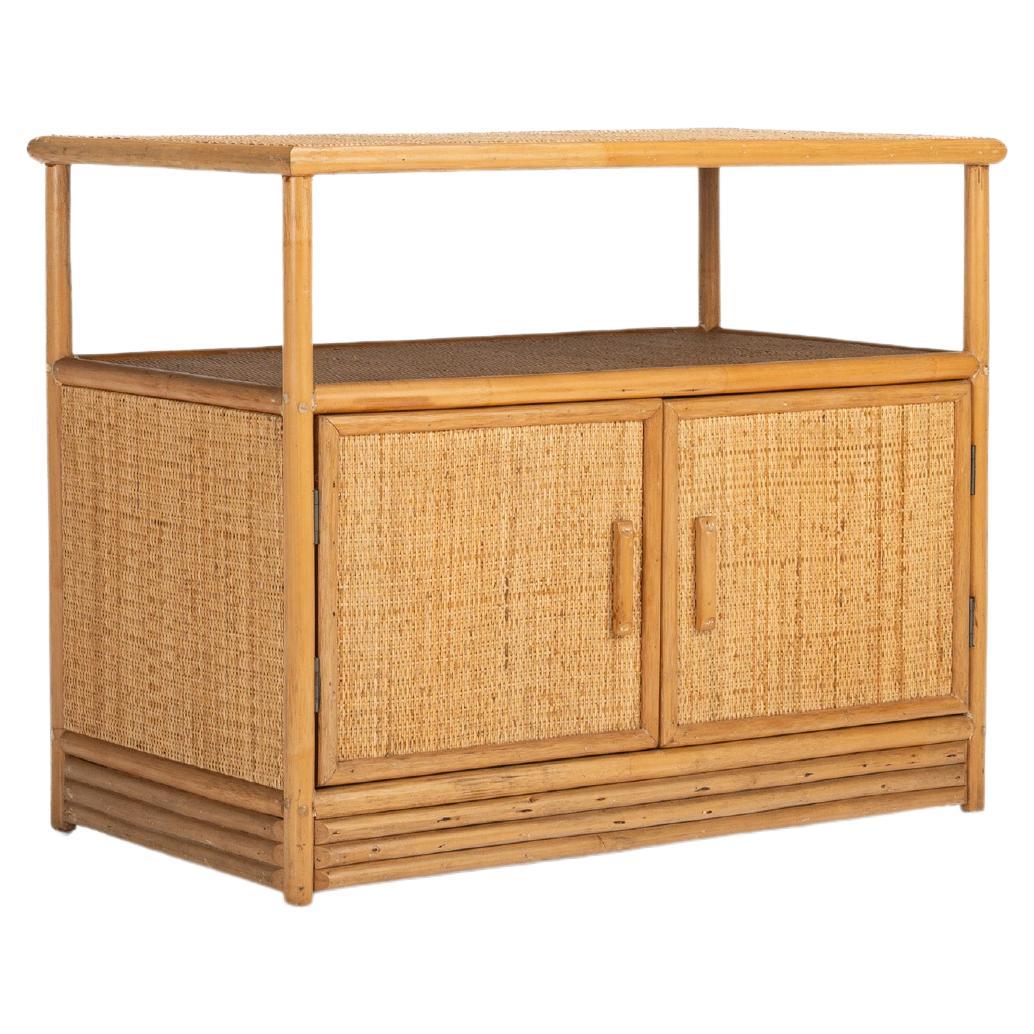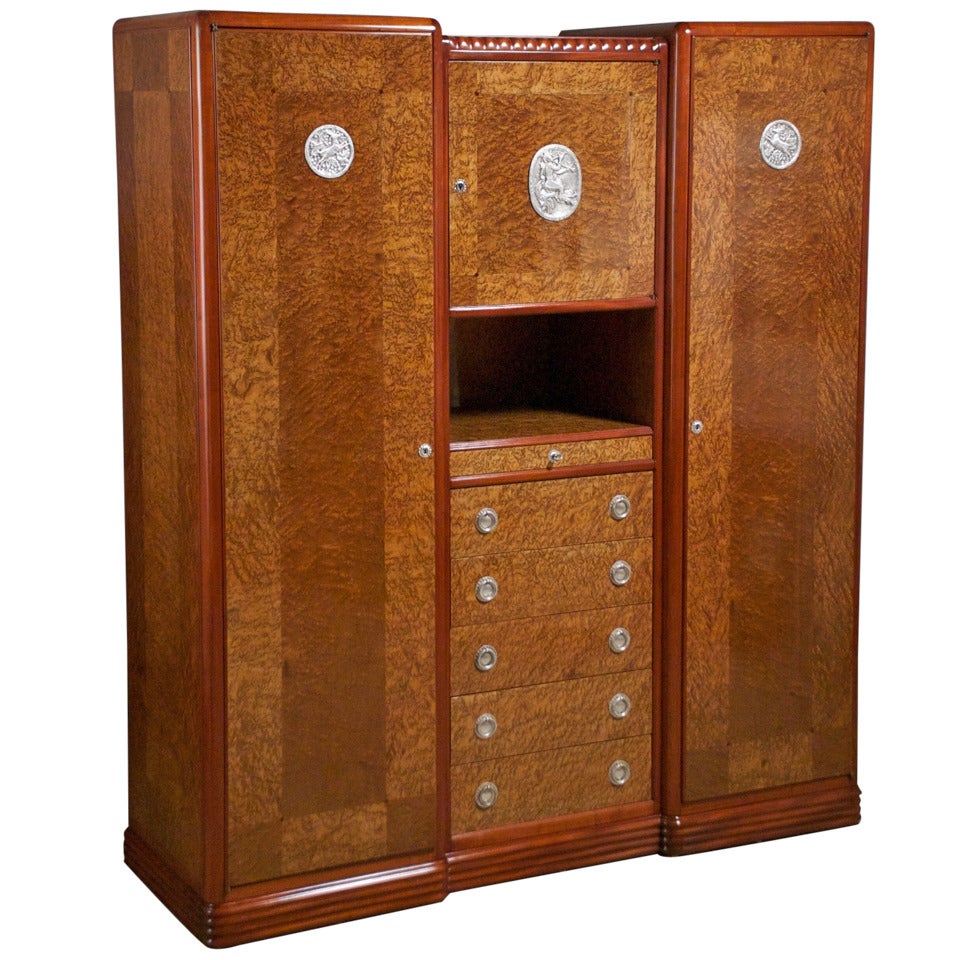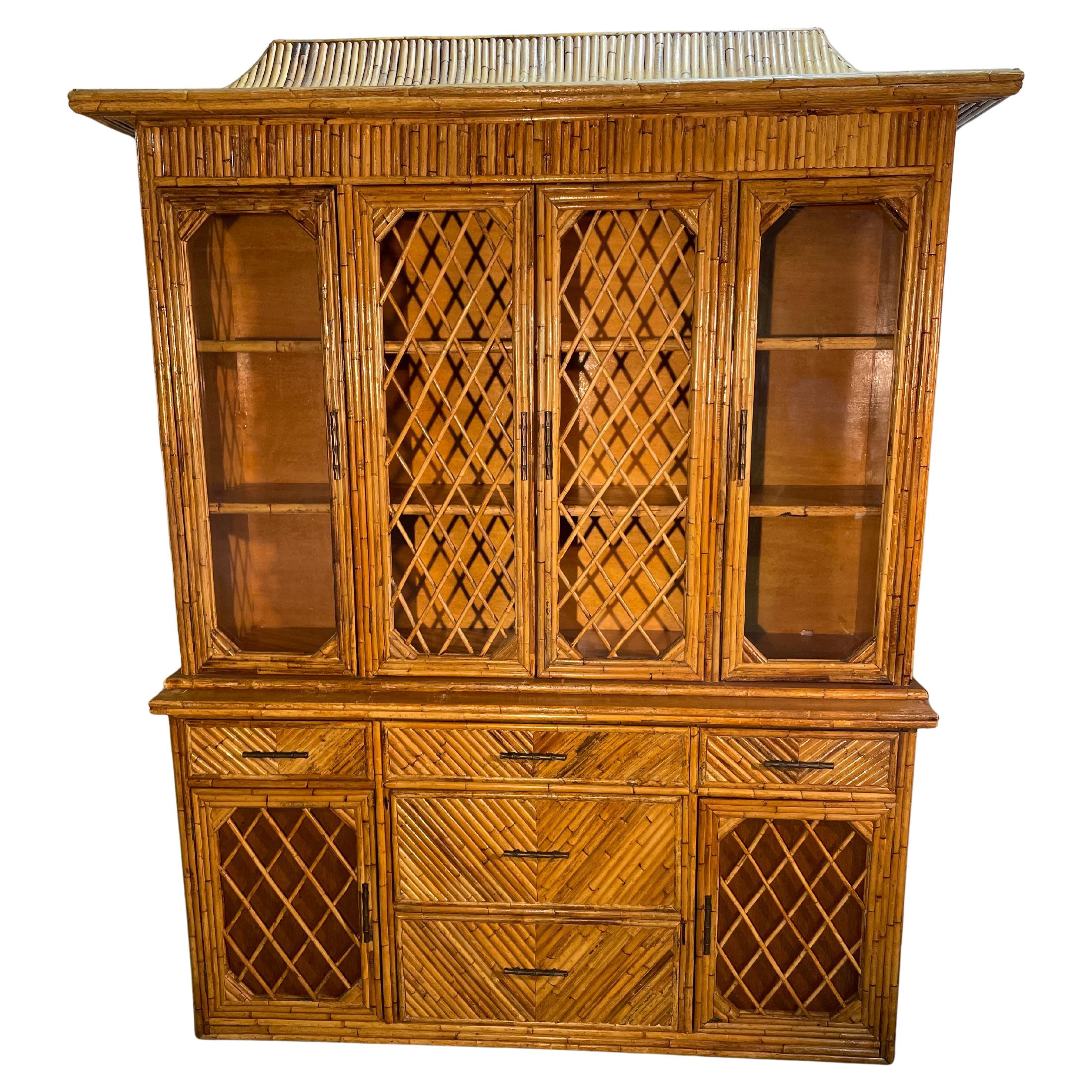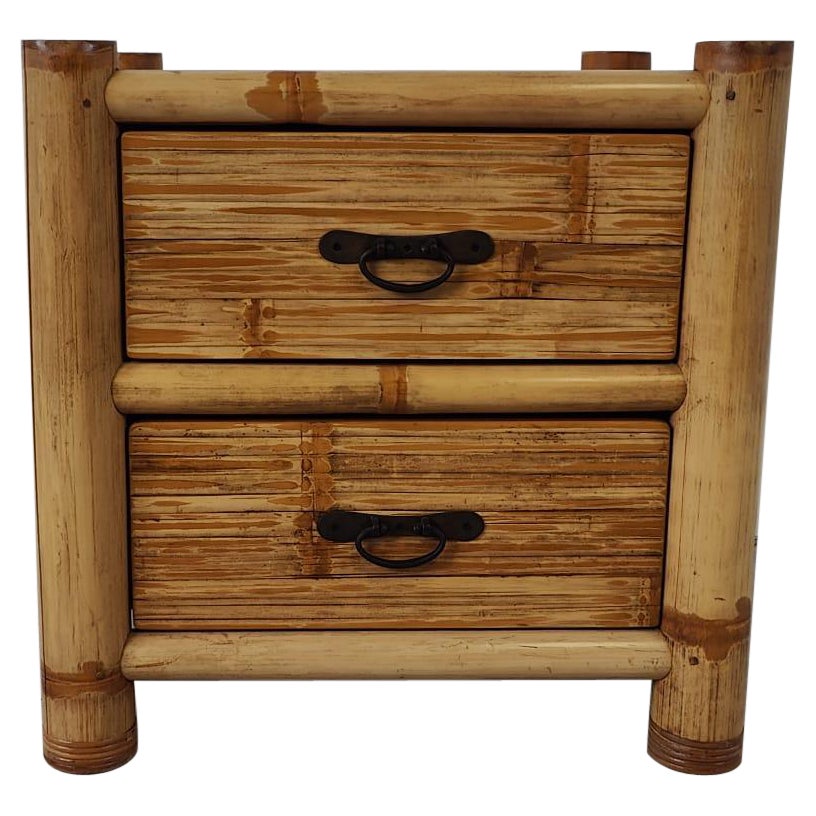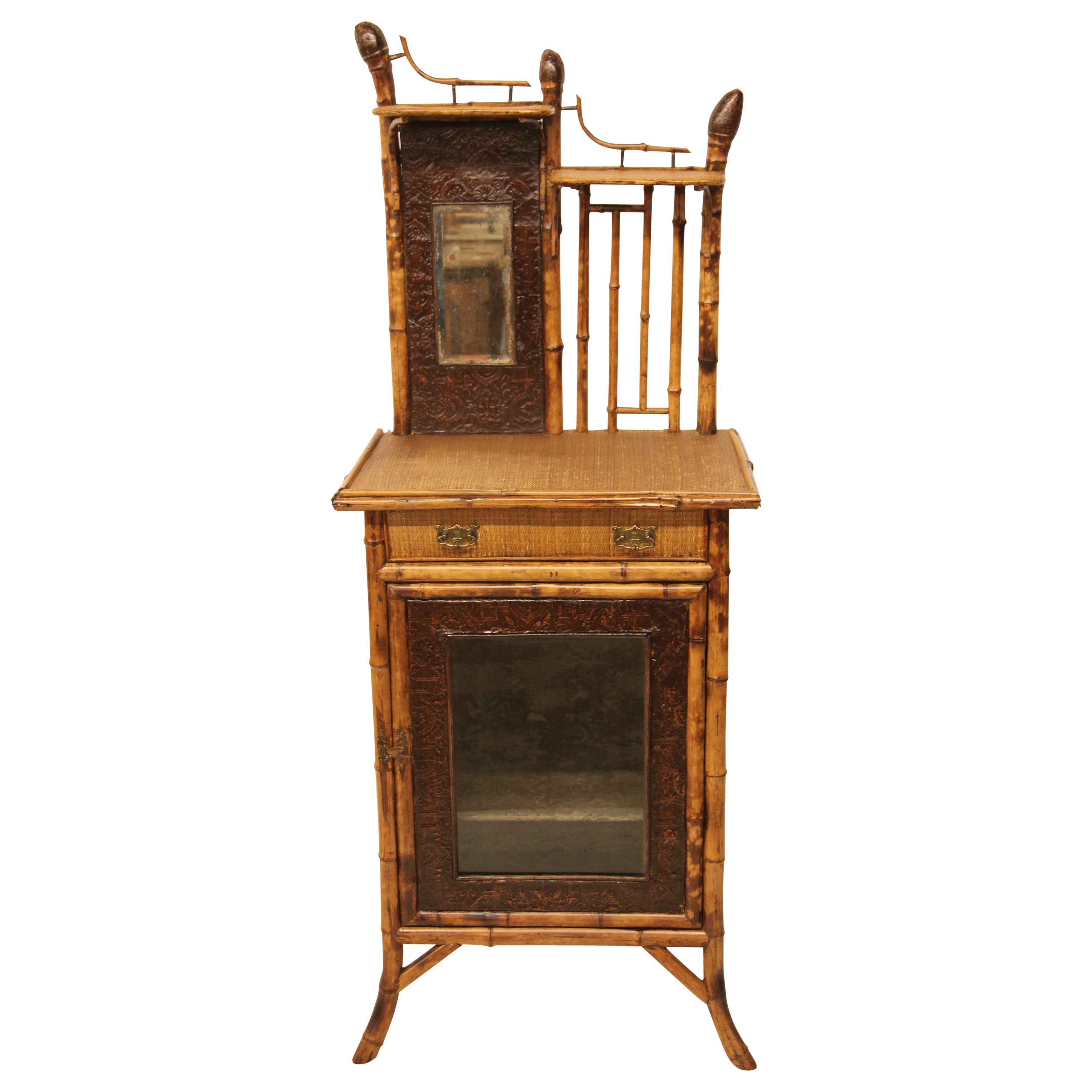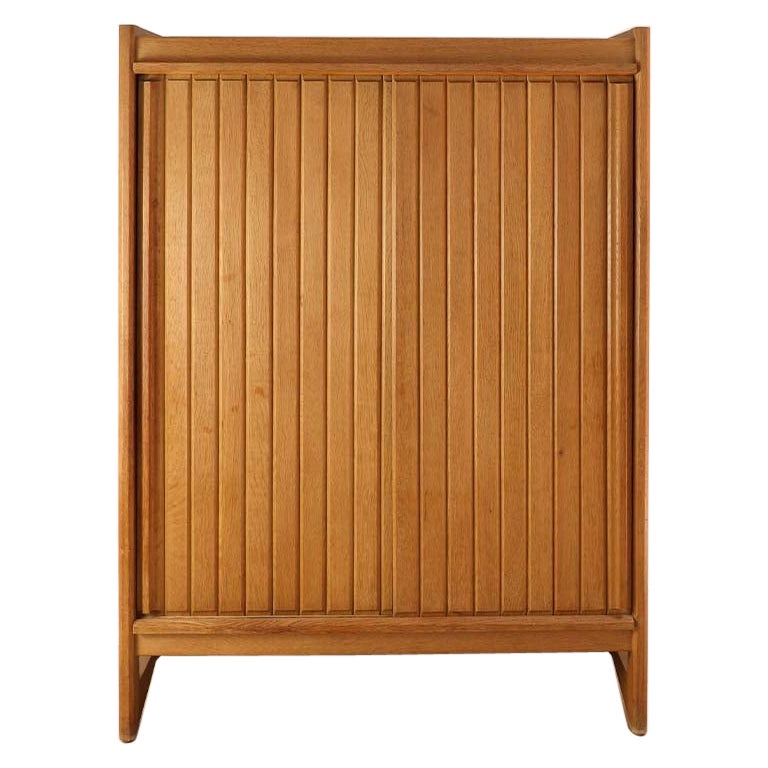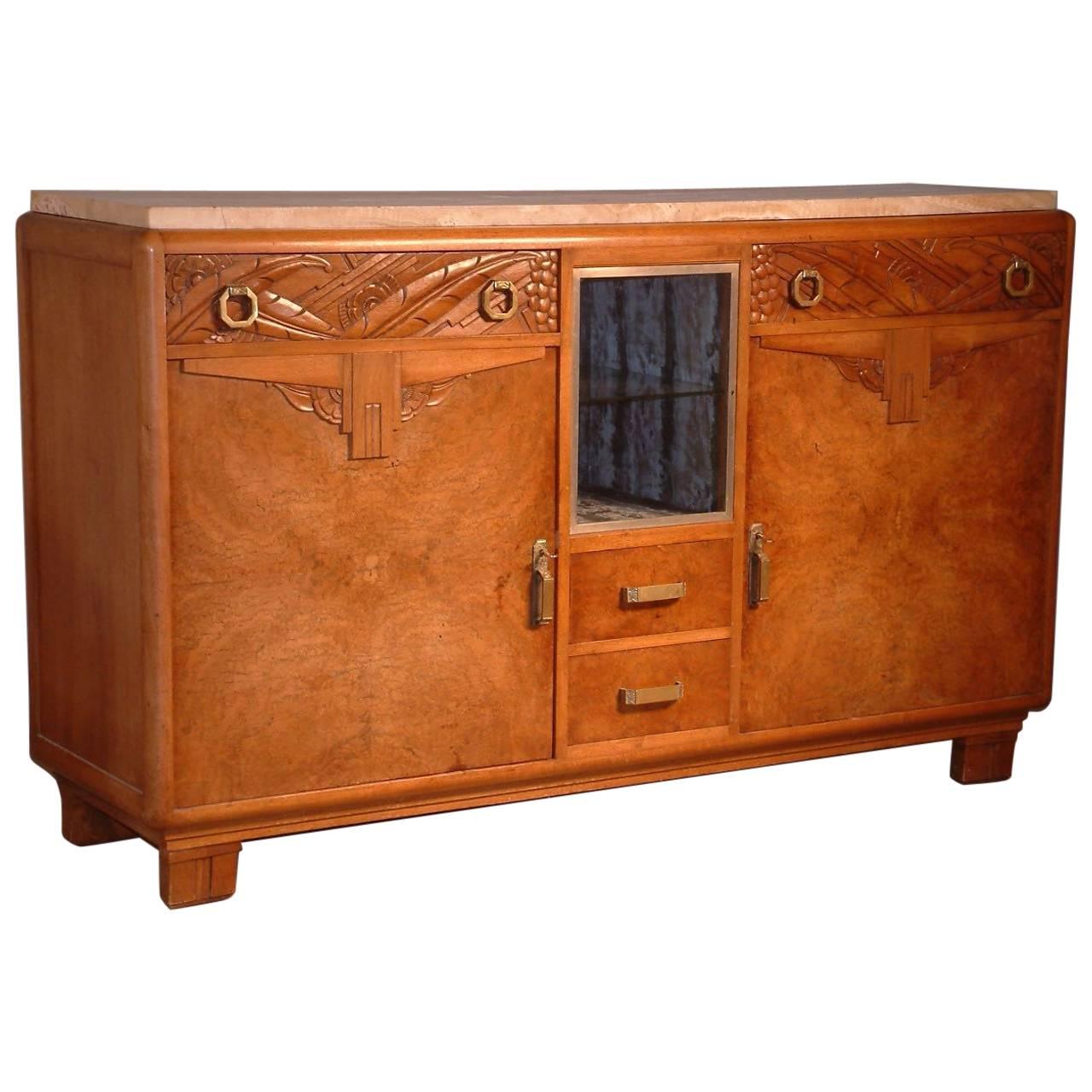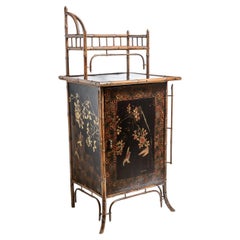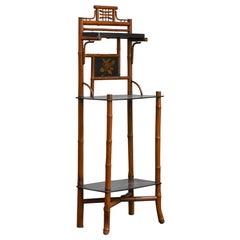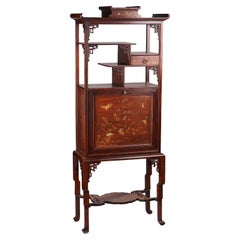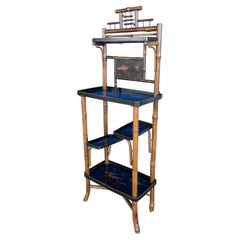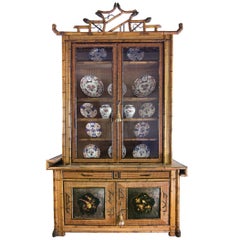
Perret et Vibert Japonais Bamboo Cabinet
View Similar Items
1 of 7
Perret et Vibert Japonais Bamboo Cabinet
$59,000List Price
About the Item
- Creator:Perret et Vibert (Designer)
- Dimensions:Height: 104.5 in (265.43 cm)Width: 39.5 in (100.33 cm)Depth: 22 in (55.88 cm)
- Materials and Techniques:
- Place of Origin:
- Period:
- Date of Manufacture:circa 1880
- Condition:antique condition; some splits in the weave.
- Seller Location:Montecito, CA
- Reference Number:Seller: 311stDibs: LU83935600963
Authenticity Guarantee
In the unlikely event there’s an issue with an item’s authenticity, contact us within 1 year for a full refund. DetailsMoney-Back Guarantee
If your item is not as described, is damaged in transit, or does not arrive, contact us within 7 days for a full refund. Details24-Hour Cancellation
You have a 24-hour grace period in which to reconsider your purchase, with no questions asked.Vetted Professional Sellers
Our world-class sellers must adhere to strict standards for service and quality, maintaining the integrity of our listings.Price-Match Guarantee
If you find that a seller listed the same item for a lower price elsewhere, we’ll match it.Trusted Global Delivery
Our best-in-class carrier network provides specialized shipping options worldwide, including custom delivery.You May Also Like
French Antique Bamboo & Lacquer Cabinet Attr. To Perret Vibert, 1890-1900
By Perret Vibert & J. Rainfray
Located in West Palm Beach, FL
This a wonderful example of French Art[Nouveau furniture.
This French Antique Bamboo & Lacquer Cabinet is Attributed to Perret Vibert, the famous cabinetmaker from the Art Nouveau pe...
Category
Antique Late 19th Century French Art Nouveau Cabinets
Materials
Bamboo, Lacquer
Japonisante Etagère in bamboo and lacquer attributed to Perret & Vibert, France
By Perret et Vibert
Located in Roma, RM
Japonisante Etagère in bamboo and lacquer attributed to Perret & Vibert, France late 19th century.
Product details
From the residence of Antonello Falqui – Falqui Collection.
Struc...
Category
Antique Late 19th Century Shelves
Materials
Bamboo, Wood
Japanese Style Cabinet-Secretary Att. to Perret & Vibert, France, circa 1880
By Perret et Vibert
Located in PARIS, FR
A Japanese style carved wood cabinet, with a painted decor imitating Japanese lacquer, ornamented with flowers, birds and butterflies. Opening onto two drawers and a paper filer, the upright-secretary door is also fitted with red velvet. Surmounted by a drawer and asymmetrical shelves, composed in the Japanese « zen » spirit, the cabinet stands on four legs joined by an engraved stretcher.
The great influence of the Far-East, through China and Japan, in the second half of the 19th century French art could be found first in painting and soon after in decorative arts and furniture as well.
Following the Franco-English military campaign led in 1860 against the Imperial army in China, the French troops of Napoleon III brought back from the Summer Palace, a part of the Chinese Imperial court treasure, which will make up the famous Chinese Museum of Empress Eugénie at the Fontainebleau Palace. The French artists won’t be long to take inspiration from those exotic and sumptuous objects for their creations, as they used to do in the 18th century, when the best French cabinet-makers adapted the Chinese lacquers on the luxurious royal chests.
But the influence of Japan, at the Meiji period (1868-1912), came also very quickly to France, thanks to the opening of the country in the middle of the 19th century, as well as the development of traveling and the amazing Universal Exhibitions, in which Japan participated for the first time in 1867 in Paris. Then many Japanese objects and prints were imported to France and to all Europe, and for which some collectors spent already fortunes.
With Manet and Impressionists generation, the passion for Japanese art, more than a simple taste for an exotic style, was still in fashion until the turn of the 19th century. It provoked not only a craze among the French aristocratic families as well as the wealthy Paris high society, wishing renew their mansion inner decoration, but turned also to a real revolutionary movement among the “avant-garde” artists. Those artists, whoever they were, painters, cabinet-makers or designers of ceramic, bronze and crystal objects, adapted then those techniques and naturalistic motifs unknown until this time.
Christofle, very famous since 1867 as a silversmith, was also one of the leaders among the inventors of Japanism. He knew how to use Japanese elements to his own splendid works made in silver or “cloisonné” enameled bronze. During the 1878 Paris Universal Exhibition, Christofle presented with great success his life-sized bronze Japanese ladies torcheres, executed by the renowned sculptor Guillemin.
Another famous company to be mentioned, is “L’Escalier de Cristal”, producing art objects and furniture, all of high standard quality and innovating much with their Japanese decor. Highly remarked during the Universal Exhibitions, “L’Escalier de Cristal” collaborated with the greatest artists, such Gallé and Rousseau for glass- and ceramic wares, and the cabinet-makers Lièvre and Viardot, whom made furniture including sometimes authentic Japanese elements.
In 1872, Alfred Perret and Ernest Vibert opened in Paris, at 33 rue du Quatre-Septembre a store that offered “natural bamboo furniture and cane seats” and all kinds of textile fittings for furniture. This furniture used for winter gardens and terraces of mansions knew then a resounding success. They developed their business around 1884 with their Japanese style furniture, very close to that executed by Gabriel Viardot (1830-1906). In 1886, the company appearing in the category of “Chinoiserie and Japoneries” offered, in addition to furniture and seating creation, works of art and inlaid furniture directly imported from the Far East ; an activity that expanded rapidly. Their exotic fantasy furniture presented at the Universal Exhibition of Paris in 1889 and 1900, rewarded them two silver medals. In 1894, the company was listed under the name “Perret et Vibert”, headed by the son of Alfred Perret and Ernest Vibert. The same year, they redesigned their store on rue du Quatre-Septembre, creating ten new show-rooms, showing complete furniture sets of Japanese and Chinese style inspiration. It was not until 1895, that the company was finally named “La Maison des Bambous” and organized then in their shops an “exhibition of country furniture and seats for castles and villas”, which was visited by Empress Eugenie to furnish her villa Cyrnos at Cap Martin. She actually was a regular customer of the “Maison des Bambous” as she bought repeatedly furniture. In October of the same year, the king of Greece...
Category
Antique 1880s French Japonisme Secretaires
Materials
Wood
Antique 19th Century Bamboo Lacquered Display Stand, Perret And Vibert, France
By Perret et Vibert
Located in London, GB
Antique 19th Century Bamboo Lacquered Display Stand, Perret And Vibert, France.
C.1880
In very good condition commensurate of age.
Category
Antique 19th Century French Japonisme Shelves
Materials
Bamboo
Antique 19th Century Lacquered Etagere Perret And Vibert, France
By Perret et Vibert
Located in London, GB
Antique 19th Century Lacquered Etagere Perret And Vibert, France
C.1890
In very good condition commensurate of age.
Category
Antique 19th Century Japonisme Shelves
Materials
Fruitwood, Lacquer
Bamboo cabinet sideboard
Located in Ranst, VAN
Vintage bamboo and rattan cabinet with two folding doors and a lot of storage space. Can be used as a dresser or as tv cabinet. In very good condition.
Dimensions:
W: 90 cm
D: 51 cm...
Category
Mid-20th Century Danish Bohemian Cabinets
Materials
Bamboo, Wicker
$1,142
